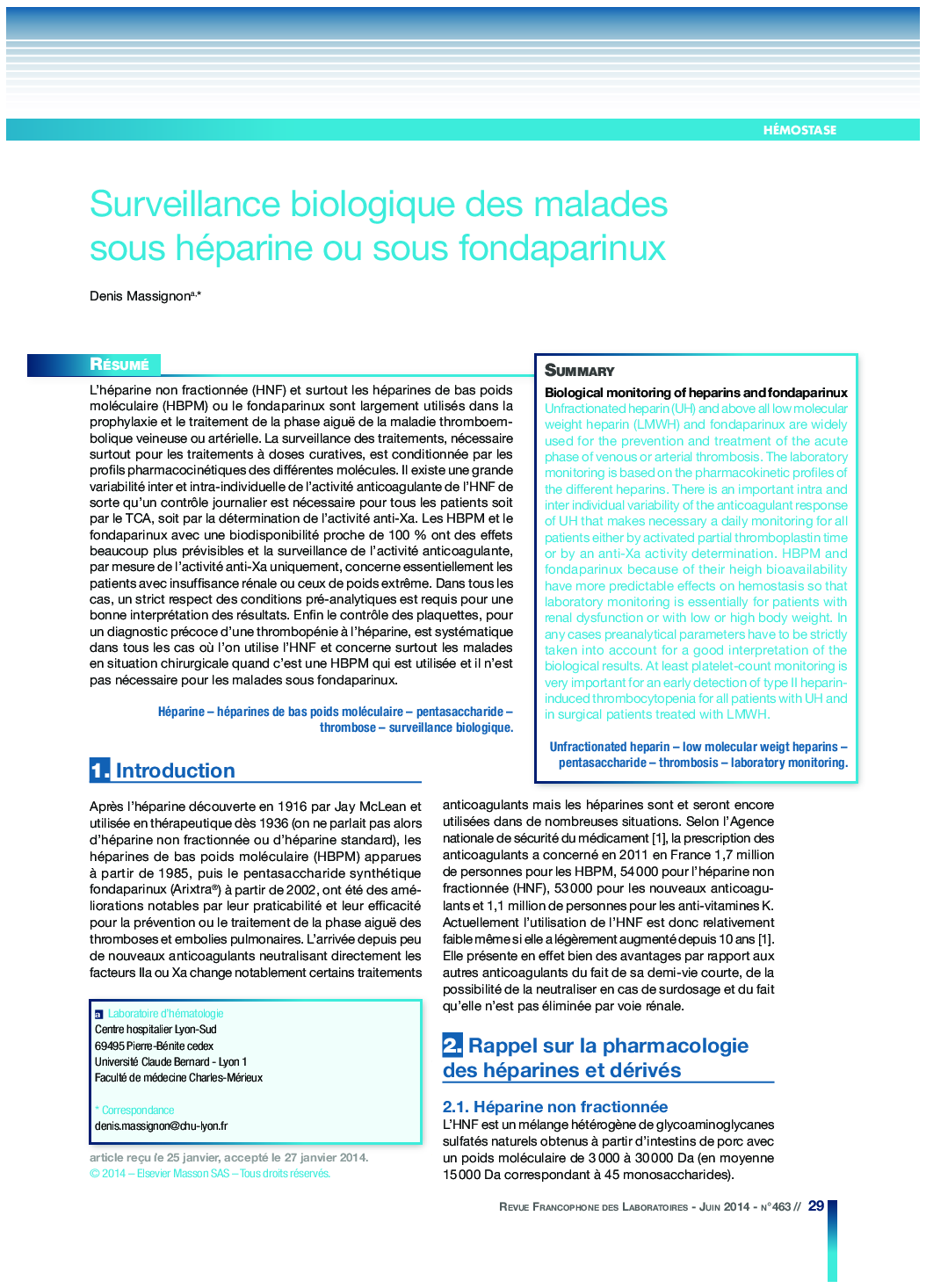| Article ID | Journal | Published Year | Pages | File Type |
|---|---|---|---|---|
| 7649224 | Revue Francophone des Laboratoires | 2014 | 7 Pages |
Abstract
Unfractionated heparin (UH) and above all low molecular weight heparin (LMWH) and fondaparinux are widely used for the prevention and treatment of the acute phase of venous or arterial thrombosis. The laboratory monitoring is based on the pharmacokinetic profiles of the different heparins. There is an important intra and inter individual variability of the anticoagulant response of UH that makes necessary a daily monitoring for all patients either by activated partial thromboplastin time or by an anti-Xa activity determination. HBPM and fondaparinux because of their heigh bioavailability have more predictable effects on hemostasis so that laboratory monitoring is essentially for patients with renal dysfunction or with low or high body weight. In any cases preanalytical parameters have to be strictly taken into account for a good interpretation of the biological results. At least platelet-count monitoring is very important for an early detection of type II heparin-induced thrombocytopenia for all patients with UH and in surgical patients treated with LMWH.
Keywords
Related Topics
Physical Sciences and Engineering
Chemistry
Analytical Chemistry
Authors
Denis Massignon,
